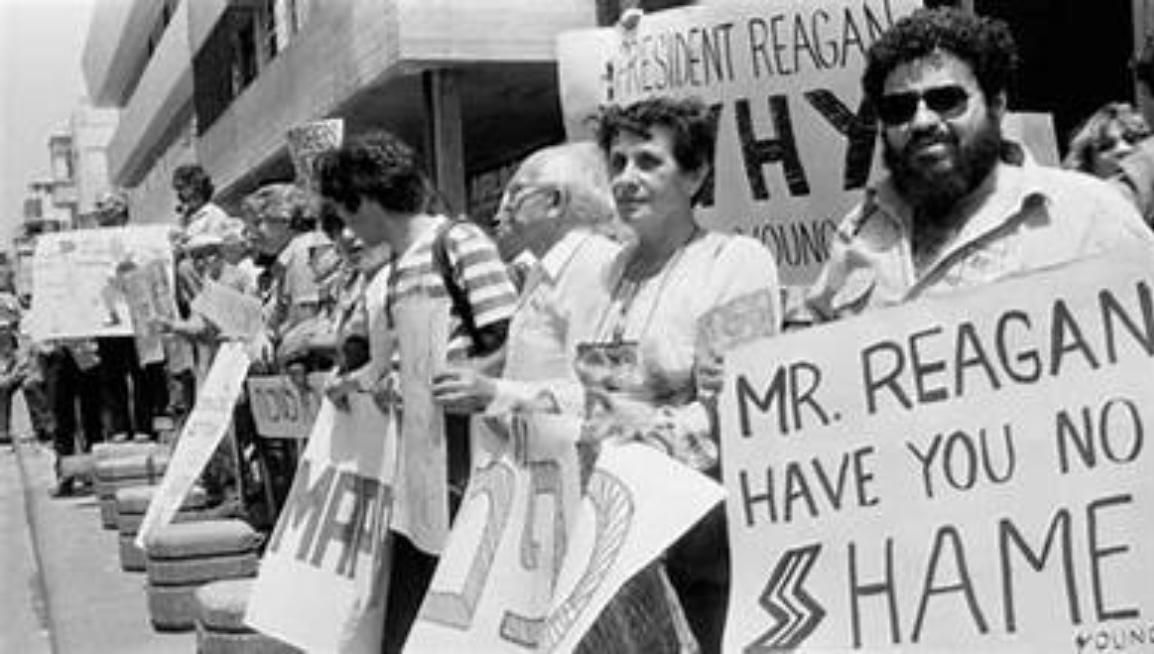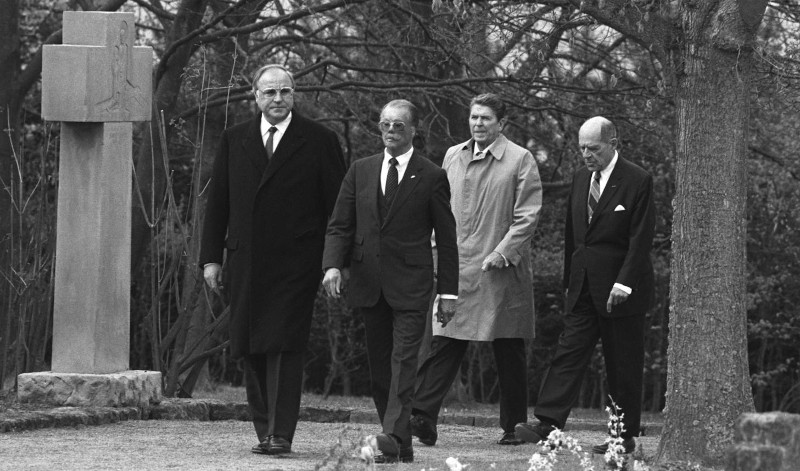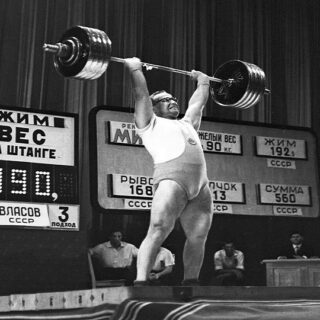

During his state visit to Germany on the eve of the 40th anniversary of the end of World War II in Europe, on May 5, 1985, Ronald Reagan stopped in Bitburg, where he laid a wreath at the burial site of German soldiers who died in both world wars.
US 40th President did just that at the suggestion of West German Chancellor Helmut Kohl. The latter convinced the head of the White House that it was time to draw a line under the past and make a symbolic gesture of reconciliation near an American military base on German soil.

Ever since coming to power in 1982, Kohl had endeavored to rehabilitate as many Germans who had served Hitler’s Third Reich as possible. In 1983, for example, his government had removed the veterans’ organizations of the Waffen-SS from the list of extremist right-wing groups on which the West German Ministry of Interior was required to make annual reports to Parliament.
Also, Kohl had repeatedly blocked demands by the opposition Social Democrats to ban the highly controversial reunions of former Waffen-SS members. Thus, Kohl’s request to have Reagan go to Bitburg was part of a strategy to rewrite German history and curry favor with the most reactionary elements of the West German electorate.
Reagan’s foreign trips were planned with enviable care and well in advance. In late 1983, he visited South Korea, and exactly a year before that, day by day and even hour by hour, a large advance group of employees of the presidential administration, i. e. his bodyguards, protocol officers, PR experts, etc. followed that very route. As a result, a year later, Reagan’s visit to South Korea was executed without a hitch.
Similarly, in February 1985, a high level delegation from Washington, headed by Michael Deaver, Deputy Chief of the White House Staff, flew to the Federal Republic of Germany. In Bitburg they visited the above mentioned cemetery. After that, they were offered a trip to Bergen, where in May 1940 the Nazis had set up a concentration camp for prisoners of war. Initially, several hundred Belgians and Frenchmen were held there, and a year later, 20,000 Soviet POWs joined them (slightly more than 2,000 survived the imprisonment). Before the war ended, nearly 50,000 more prisoners died in that camp, including Anne Frank, 15-year old author of the world famous diary.
Deaver refused to go to Bergen, though. He said that Reagan did not want to “open old wounds and reawaken the passions of the time.”
The advance party went back home, and on April 11, White House Press Secretary Larry Speakes announced that 3 weeks later the US President would visit Bitburg, where he would lay a wreath at the military cemetery. “Who was buried there?” one of journalists asked. Speakes did not expect such a quesion and provided a vague answer: “American and German soldiers, I guess.”
In reality, each of the 2,000 graves at the Bitburg cemetery contained the remains of German soldiers only. Moreover, 49 of those buried there served in the elite SS division “Leibstandarte Adolf Hitler”. Its personnel committed numerous war crimes in Poland, France, Italy, Belgium, but most of all in the USSR.
On May 28, 1940, SS servicemen from that division burned alive about 80 British prisoners of war in Wormhoudt (France). On August 16-18, 1941, they gunned down almost 4,000 captured Red Army soldiers in Ukraine’s village of Vinogradovka. Two months later, during the capture of Taganrog, one of the division commanders ordered not to take any prisoners, and several thousand Red Army servicemen were shot dead on the battlefield. Soon afterwars, during the occupation of that city in Southern Russia, 1,800 Jews were killed with the participation of the Leibstandarte. In February-March 1943, the division “cleansed” the Ukrainian village of Yefremovka in the Kharkov region, killing 865 civilians. A couple of weeks later, the Leibstandarte burned alive and shot over 700 wounded Red Army soldiers.
In late 1943, the division was transferred to Western Europe, where it continued to commit atrocities, killing civilians in Italy and France. And in late 1944-early 1945, during the Ardennes operation, the Leibstandarte shot about 450 American POWs and more than 110 civilians in Belgium. As a result, the “Leibstandarte Adolf Hitler” division was added to the list of Wehrmacht and SS units that committed war crimes in the USSR, and was judged as a criminal organization at the Nuremberg Trials.
News of SS men buried at Bitburg cemetery that Reagan intended to visit caused a scandal in Washington. The Jewish-Israeli lobby took care of that. Many prominent government officials, U.S. Army officers and celebrities, each with ties, or friends with ties to their respective Jewish communities, all protested the planned visit.
53 US senators, including 11 Republicans, signed a letter asking the president to cancel, and 257 representatives (including 84 Republicans) signed a letter urging Chancellor Kohl to withdraw the invitation. Nancy Reagan, US president’s spouse, was against his visit to Bitburg, too.
And Elie Wiesel, Auschwitz and Buchenwald former prisoner, head of the President’s Commission on the Holocaust, begged Reagan at a White House ceremony to “find another way” to “draw a line under the past.” “You don’t belong there, Mr. President!” Wiesel appealed.
There were other public protests, too. An American veteran of World War II returned his military awards to the White House in anger, while the popular rock band Ramones released a single called “Bonzo Goes to Bitburg”. (Bonzo was the name of a chimpanzee filmed in a comedy where Reagan played the leading role in 1951). In his own appeal to the president, Ramones lead singer Joey Ramone, a Jewish man, said, “How can you forget 6 million people being gassed and roasted?”
However, the 40th President of the United States bit the bullet. 17 days before his trip to Bitburg, he made this remark: “The average age of those buried at that cemetery was 18 years. Those young people are also victims of Nazism, although they were dressed in German uniforms. They were called up for military service to carry out the hateful wishes of the Nazis.” And he repeated: “They are certainly the same victims as the victims of the concentration camps.” Equating Nazi soldiers with Holocaust victims, responded Rabbi Alexander M. Schindler, president of the Union of American Hebrew Congregations, was “a distortion of history, a perversion of language, and a callous offense to the Jewish community.”
Nevertheless, Reagan did not cancel his visit to Bitburg and, as previously planned, laid a wreath at the memorial wall of the local military cemetery. Security was heavy for his five-kilometre route from the NATO airbase at Kolmeshöhe, lined with 2,000 policemen — one posted every 4 metres. When Reagan arrived at the cemetery, Michael Moore and a Jewish friend of his whose parents were at Auschwitz were there with a banner that read “We came from Michigan, USA to remind you: They killed my family.”
In Israel, Preme Minister Shimon Peres noted with “deep sorrow and pain” the “painful mistake” by the President of the United States who placed a wreath at the war cemetery where members of the Waffen SS were buried. But, Peres added, he regarded President Reagan as a true friend of the Jewish people and of Israel.

And Morris B. Abram, Chairman of the National Conference on Soviet Jewry, in his follow up report for The New York Times wrote, “It was wrong for him to visit Bitburg. But it is vitally important for us to understand that Bitburg was the mistake of a friend — not the sin of an enemy.”





